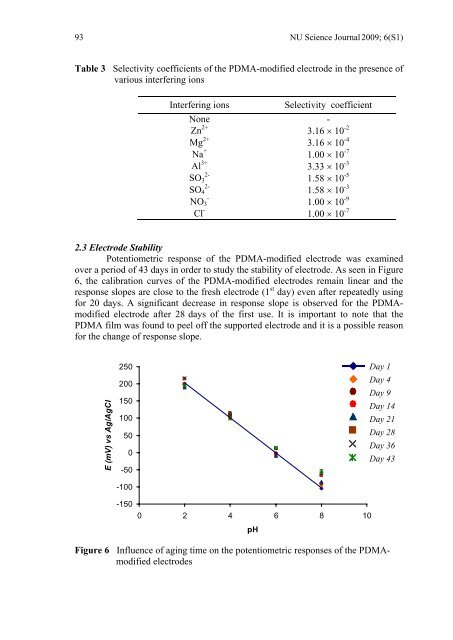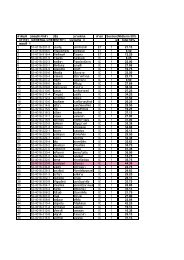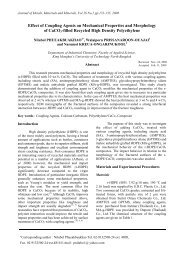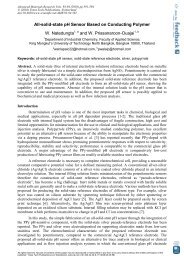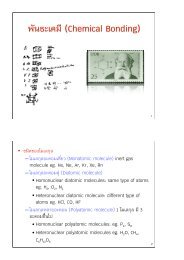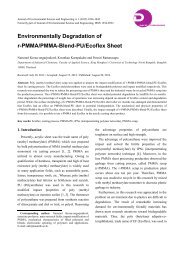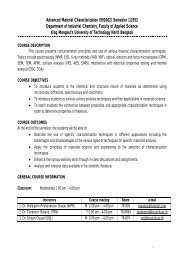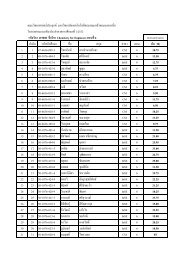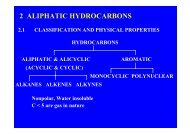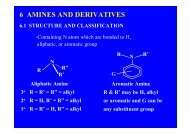93 NU Science Journal 2009; 6(S1) Table 3 Selectivity coefficients of the PDMA-modified electrode in the presence of various interfering ions Interfering ions Selectivity coefficient None - Zn 2+ 3.16 × 10 -2 Mg 2+ 3.16 × 10 -4 Na + 1.00 × 10 -7 Al 3+ 3.33 × 10 -3 2- SO 3 1.58 × 10 -5 2- SO 4 1.58 × 10 -3 - NO 3 1.00 × 10 -9 Cl - 1.00 × 10 -7 2.3 Electrode Stability Potentiometric response of the PDMA-modified electrode was examined over a period of 43 days in order to study the stability of electrode. As seen in Figure 6, the calibration curves of the PDMA-modified electrodes remain linear and the response slopes are close to the fresh electrode (1 st day) even after repeatedly using for 20 days. A significant decrease in response slope is observed for the PDMAmodified electrode after 28 days of the first use. It is important to note that the PDMA film was found to peel off the supported electrode and it is a possible reason for the change of response slope. E (mV) vs Ag/AgCl 250 200 150 100 50 0 -50 -100 -150 Day 1 Day 4 Day 9 Day 14 Day 21 Day 28 Day 36 Day 43 0 2 4 6 8 10 <strong>pH</strong> Figure 6 Influence of aging time on the potentiometric responses of the PDMAmodified electrodes
NU Science Journal 2009; 6(S1) 94 CONCLUSION PDMA-modified electrode has been simply fabricated via a one-step electropolymerization of 2,5-<strong>dimethoxyaniline</strong> on stainless steel. The potentiometric sensitivity to <strong>pH</strong> change of the PDMA-modified electrode exhibits a response slope of 49.31 ± 6.10 mV/<strong>pH</strong> (28 o C), a linearity range from <strong>pH</strong> 2 to 8 and the response time less than 10 seconds. The PDMA-modified electrode shows a small effect to several common interfering ions. The electrode lifetime is up to 20 days. XPS investigations reveal that the potentiometric responses to <strong>pH</strong> change were related to the protonation and deprotonation of the nitrogen atoms contained in the PDMA structure. Easy fabrication and low production cost of the PDMA-modified electrodes offer an alternative to polymer-<strong>based</strong> <strong>pH</strong> <strong>sensors</strong>. Further development has been focused on modification of the PDMA surfaces in order to improve the potentiometric responses to <strong>pH</strong> change which is the work in progress. ACKNOWLEDGMENTS The authors gratefully acknowledge the Australian Research Council and the State Government of Victoria for grant assistance with the acquisition and operation of XPS instrumentation. REFERENCES Aquino-Binag, C. N., Kumar, N., Lamb, R. N. and Pigram, P. J. (1996). Fabrication and Characterisation of a Hydroquinone-funtionalised PPy Thin Film <strong>pH</strong> Sensor. Chem. Mater., 8(11), 2579-2585. Bobacka, J., Ivaska, A. and Lewenstam, A. (2008). Potentiometric Ion Sensors. Chem. Rev., 108, 329-351. Buck, R. P. and Linder, E. (1994). Recommendations for nomenclature of ion-sensitive electrodes (IUPAC Recommendations). Pure Appl. Chem., 66, 2527. Lakard, B., Segut, O., Lakard, S., Herlem, G. and Gharbi, T. (2007). Potentiometric Miniaturized <strong>pH</strong> Sensors Based on <strong>Poly</strong>pyrrole Film. Sens. Actuators B, 122, 101- 108. Morita, M., Takase, H., Ishikawa, M. and Matsuda, Y. (1995). Electrocatalytic Behavior of <strong>Poly</strong>(2,5-dihydroxyaniline) Synthesized by Electropolymerization in Aqueous Solutions. Bull. Chem. Soc. Jpn., 68, 2207-2213. Perrin, D. D. and Dempsey, B. (1974). Buffers for <strong>pH</strong> and Metal Ions Control. London, Chapman and Hall. Prissanaroon-Ouajai, W., Pigram, P. J., Jones, R. and Sirivat, A. (2008). A Novel <strong>pH</strong> Sensor Based on Hydroquinone Monosulfonate-doped Conducting <strong>Poly</strong>pyrrole. Sens. Actuators B, 135, 366-374. Prissanaroon, W., Brack, N., Pigram, P. J., Hale, P., Kappen, P. and Liesegang, J. (2004). Fabrication of Patterned <strong>Poly</strong>pyrrole on Fluoropolymers for <strong>pH</strong> Sensing Applications. Synth. Met., 154(1-3), 105-108. Prissanaroon, W., Brack, N., Pigram, P. J. and Liesegang, J. (2006). Co-doped <strong>Poly</strong>pyrrole Coatings for Stainless Steel Protection. Surf. Rev. Lett., 13(2-3), 319-327.


